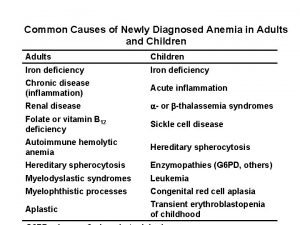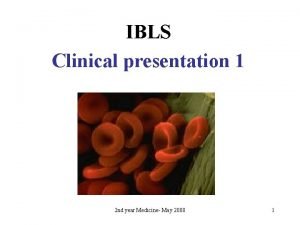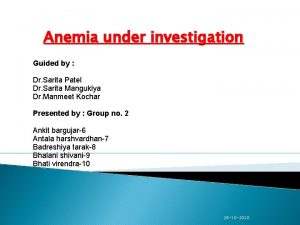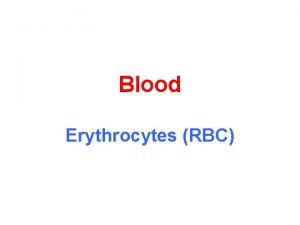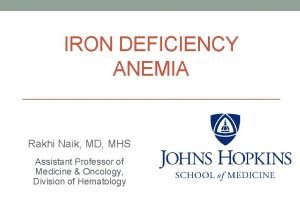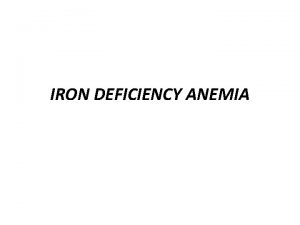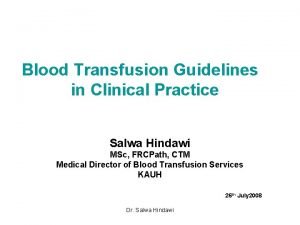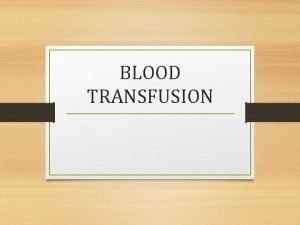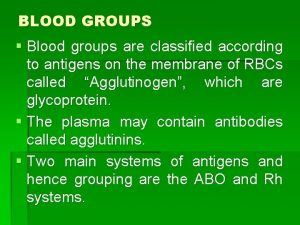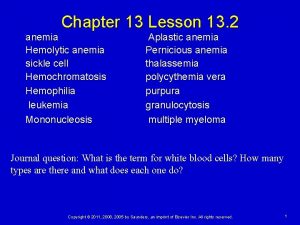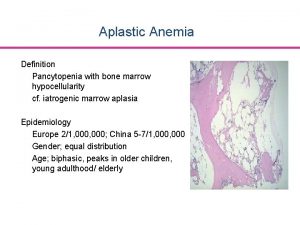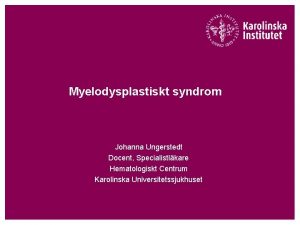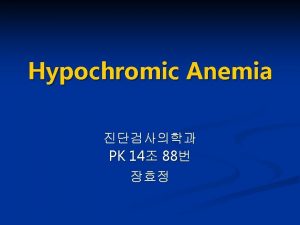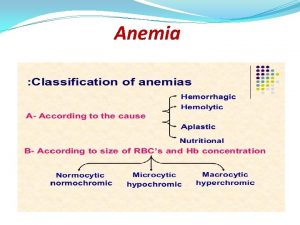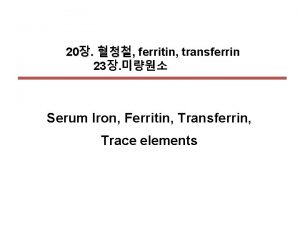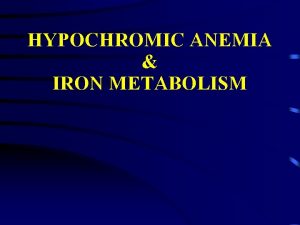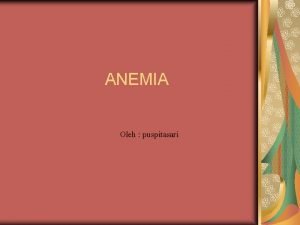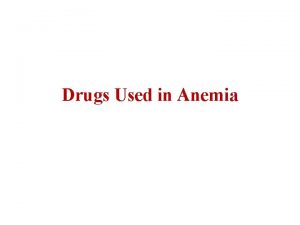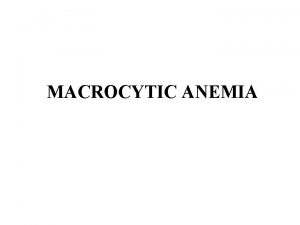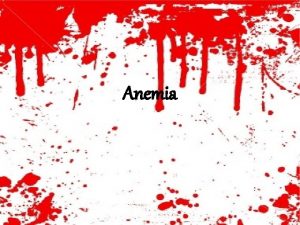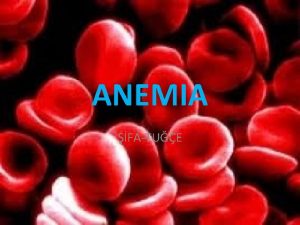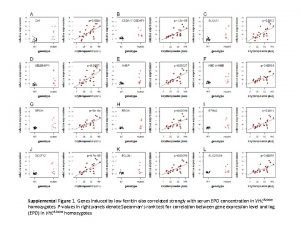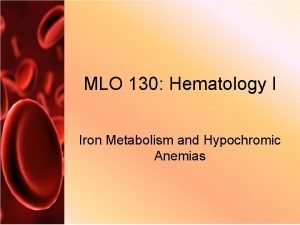Transfusion dependent microcytic hypochromic anemia with low ferritin





















- Slides: 21

Transfusion dependent microcytic hypochromic anemia with low ferritin Dr Babak Abdolkarimi Pediatric hematologist

Case presentation: • A 8 –y girl with hypochromic microcytic anemia and regular tranfusion dependency since age 2 y and frequent low Ferritin level inspite of take regular transfusion. • Several work up for etiology of microcytic hypochromic anemia inspite of transfusion was negative. • PMH: resected capillary hemangioma


BMA iron staining: 1. No ring sideroblast 2. sever decrease iron store

S/E(OB): Neg

Vit B 12, Folate : Nl

Celiac test: Neg

CBC: Hb=5. 1 MCV=77. 8 MCH=19. 5 Plt=740000 WBBC=7780

Hb electrophoresis

• BM flocytometry: • 26% Lymph in BM with T-cell dominant • Reversed CD 4/CD 8 in BM

Iron profile: • Serum Iron: 3(L) • TIBC: 492(H) • Ferritin: 1(L)


Prblem list: • 1. transfusion dependent microcytic hypochrmic anemia • 2. low SI, ferritin & high TIBC • 3 -Reversed CD 4/CD 8 ratio in BM • 4. decreased iron store in BM

What is your diagnosi?

Diffrential diagnosis • 1. congenital hypoferritinemia • 2. IRIDA • 3. ACD+IDA


hypotransferrinemia • Hypotransferrinemia though rare should be ruled out in all case of treatment refractory microcytic hypochromic anemia. • Diagnosis is confirmed by molecular genetic testing for mutation in the TF gene. Genetic counseling is available. • Treatment : infusions of FFP or purified apotransferrin that removes excess iron and replenishes the TF levels. • Monthly phlebotomy or iron chelation may be done in severe iron overload. • Treatment is life-long and regular follow-up is recommended • patients need to be in long-term follow-up to monitor the effectiveness of therapy and manage iron overload.

• The diagnosis of atransferrinemia or hypotransferrinemia may be suspected in cases with moderate to severe anemia, low (serum iron, transferrin saturation, TIBC, TF level) but with high serum ferritin. • BMA: erythroid hyperplasia with decreased iron stores. • Hepatomegaly, due to hemosiderosis and fibrosis may be noted in some cases.

IRIDA • Iron-refractory iron deficiency anemia (IRIDA) autosomal recessive disorder • IDA unresponsive to oral iron treatment but partially responsive to parenteral iron therapy • mutations in the gene TMPRSS 6, which encodes a transmembrane serine protease (also known as matriptase-2) expressed by the liver.

• inappropriately elevated levels of Hepcidin, • (a circulating hormone produced by the liver that inhibits both iron absorption from the intestine and iron release from macrophage stores. ) • TMPRSS 6 normally acts to downregulate hepcidin expression by cleaving hemojuvelin, a membranebound protein that promotes hepcidin signaling in hepatocytes. • In IRIDA, recent studies elucidating the underlying pathophysiology are presented.

 Hypochromic anemia
Hypochromic anemia Microcytic hypochromic anemia
Microcytic hypochromic anemia Microcytic hypochromic picture
Microcytic hypochromic picture Treatment of microcytic anemia
Treatment of microcytic anemia Microcytic anaemia tails
Microcytic anaemia tails Menstrual blood
Menstrual blood A/g ratio high
A/g ratio high Minal barve md
Minal barve md Ida cbc
Ida cbc Macrocytic hypochromic anemia
Macrocytic hypochromic anemia Iron deficiency anemia
Iron deficiency anemia Iron deficiency chart
Iron deficiency chart Platelets transfusion indication
Platelets transfusion indication Indications for blood transfusion
Indications for blood transfusion Indications for blood transfusion in anemia
Indications for blood transfusion in anemia Bazophile
Bazophile Megaloblastic anemia vs pernicious anemia
Megaloblastic anemia vs pernicious anemia Folate deficiency symptoms
Folate deficiency symptoms Ferritin
Ferritin Ringsideroblast
Ringsideroblast Hypochromic red cells
Hypochromic red cells Hematology cell counters
Hematology cell counters

